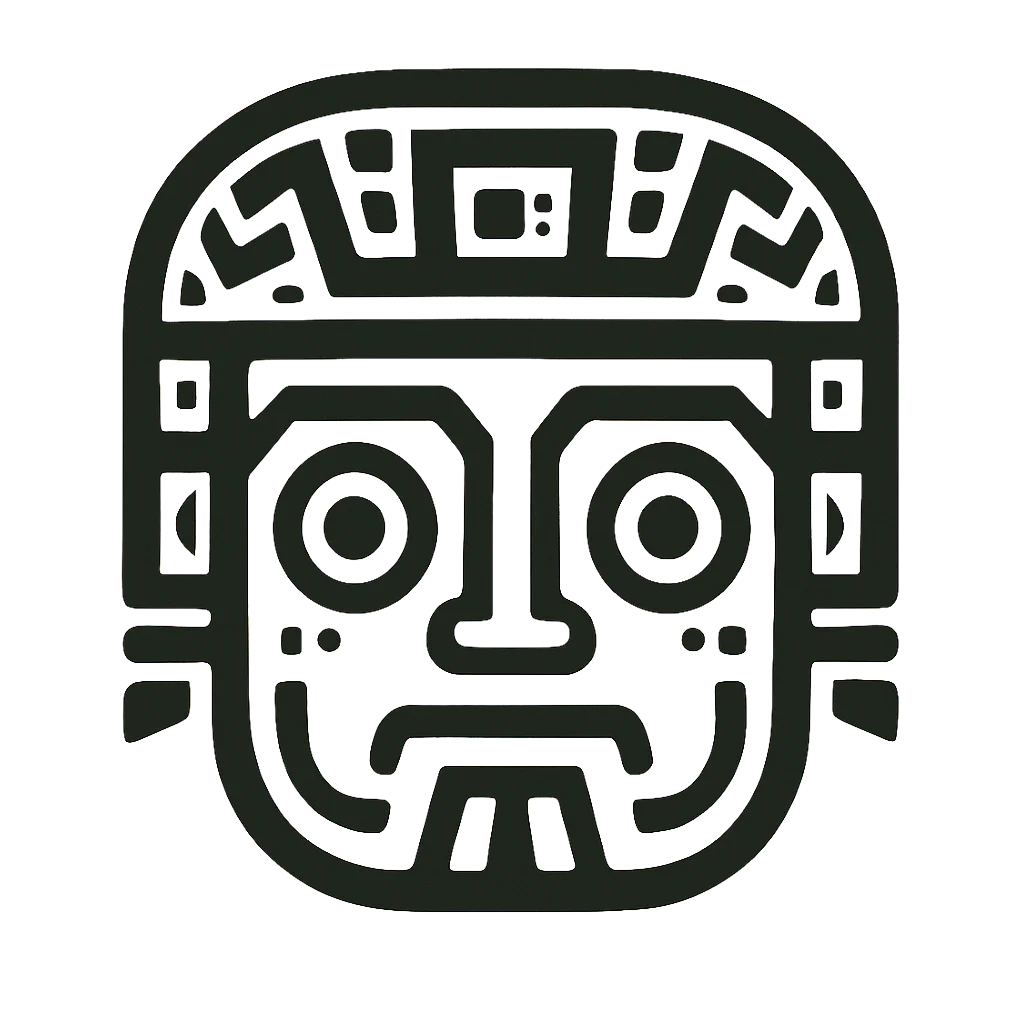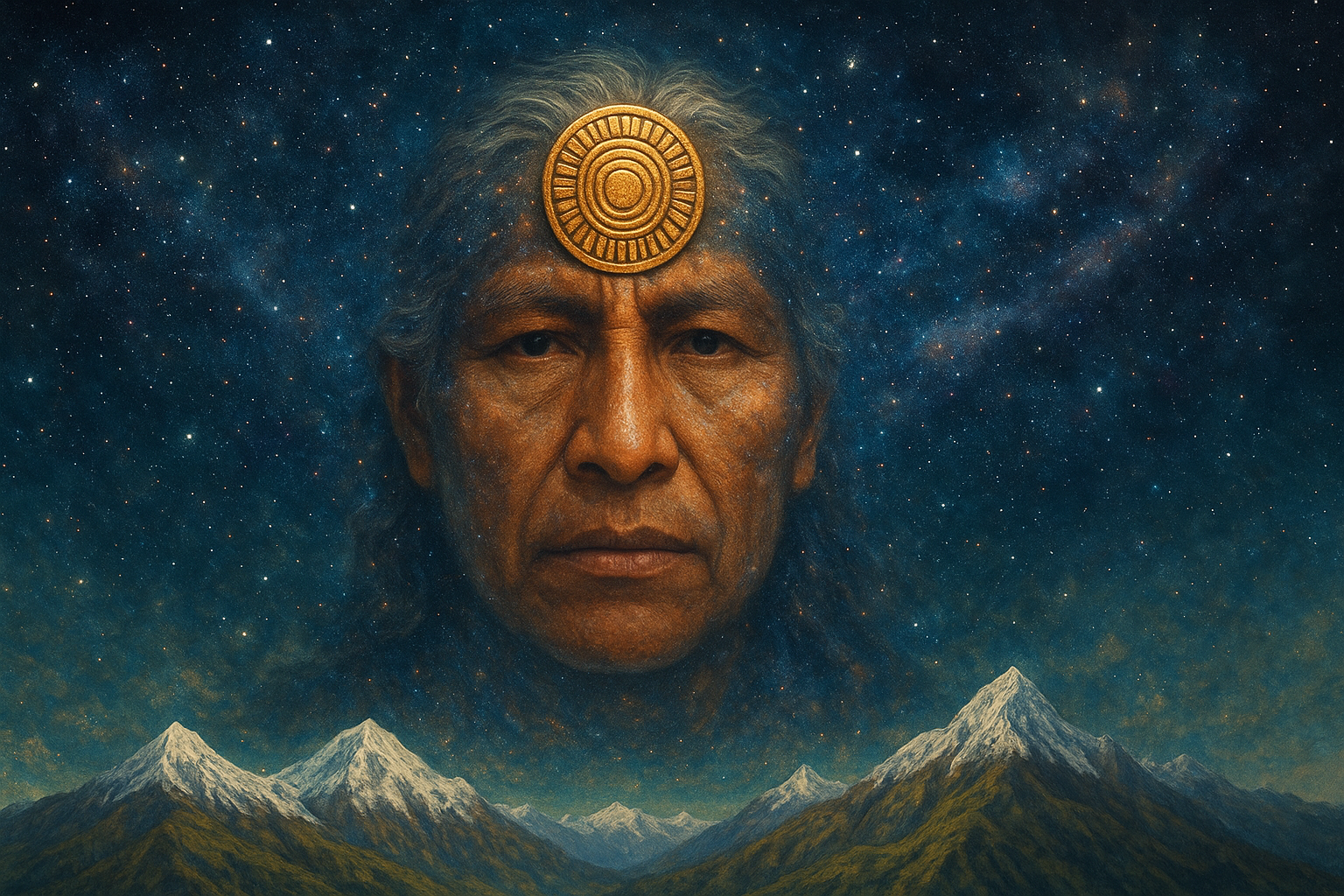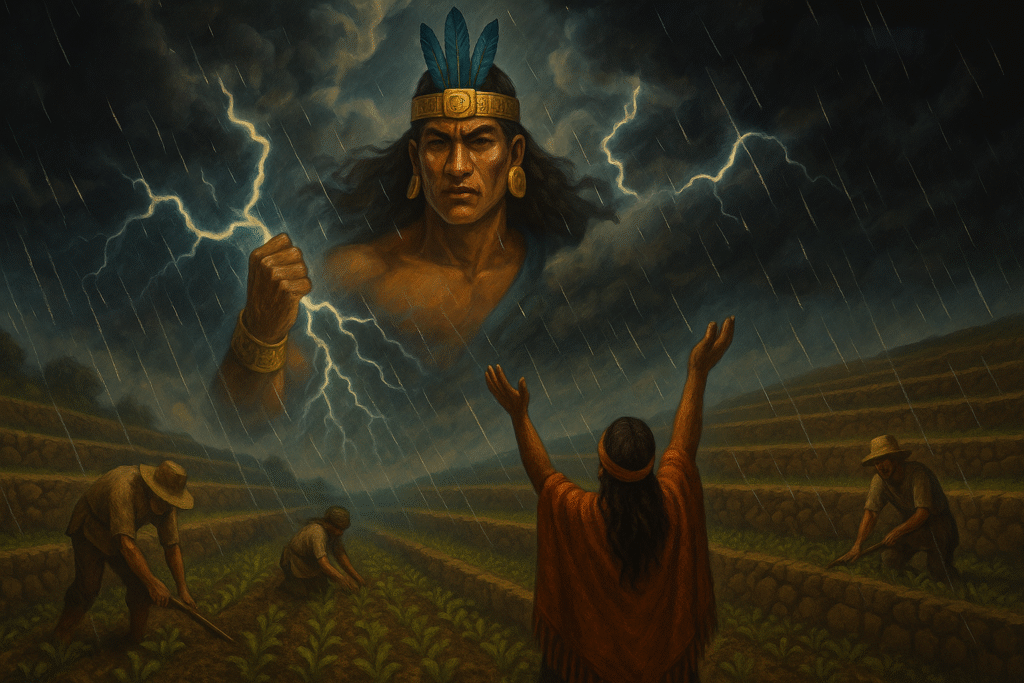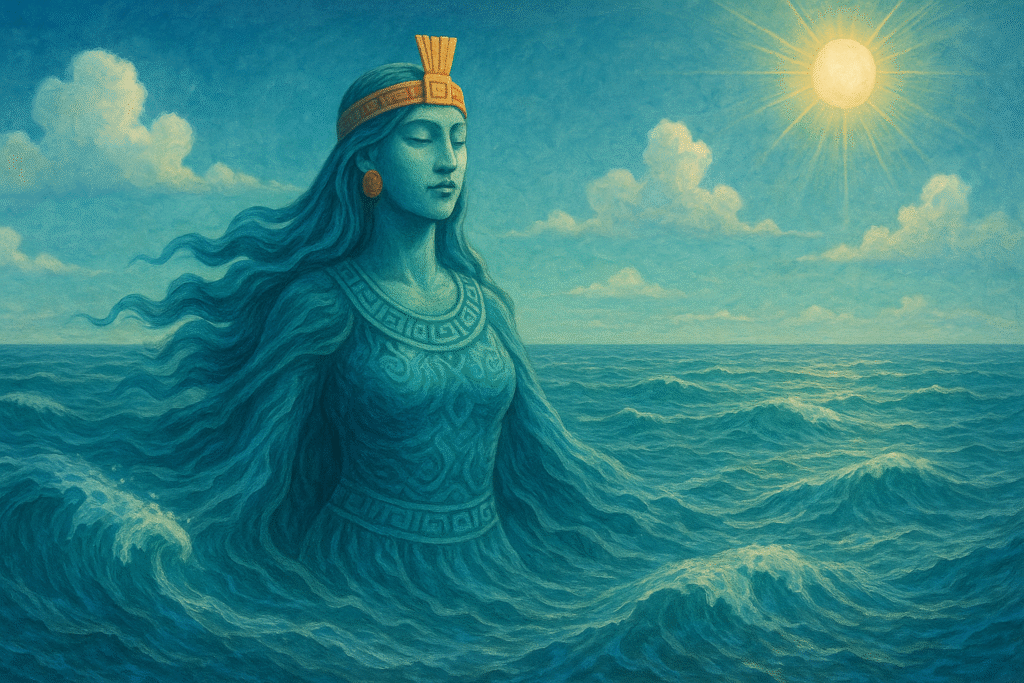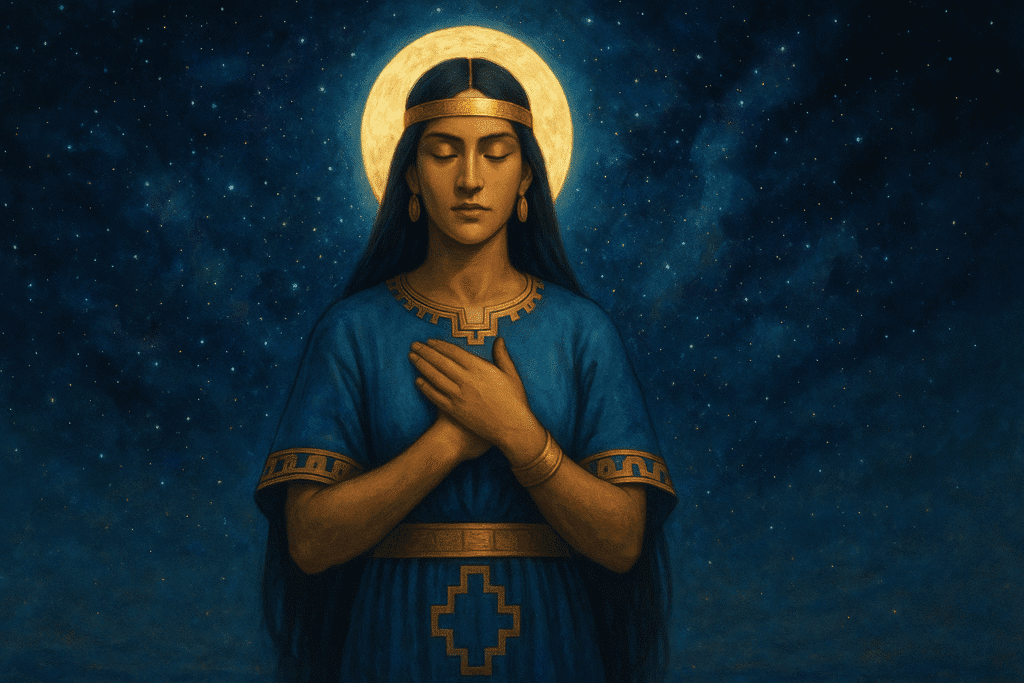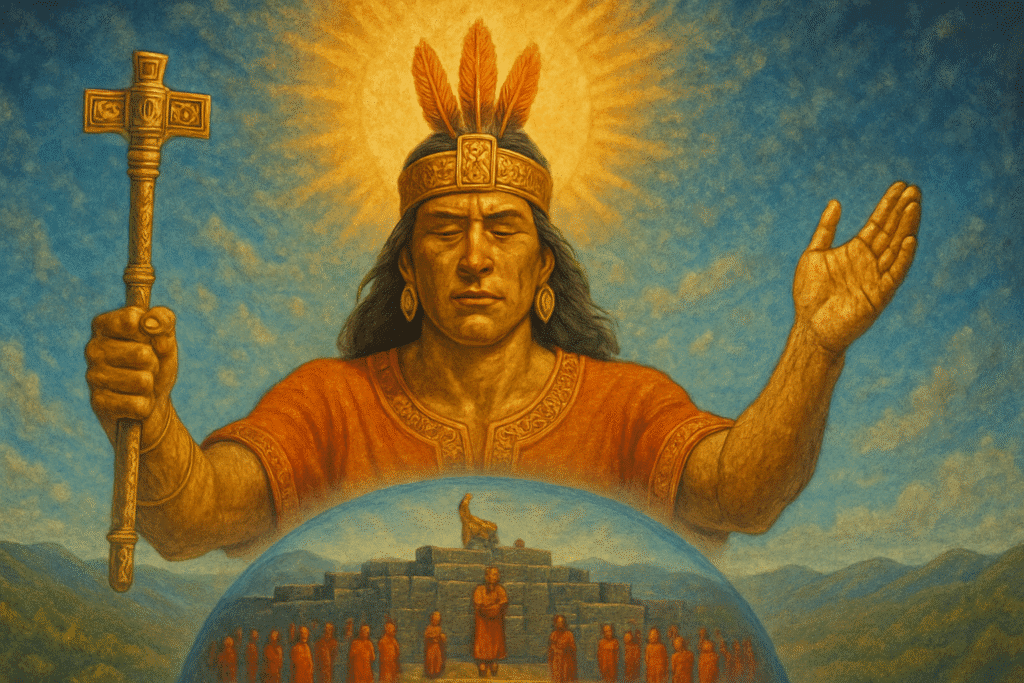High in the Andes, where mountains merge with the sky and rivers seem to speak, lies the story of Wiracocha. He is one of the oldest and most powerful gods in the Andean tradition, shrouded in mystery.
His name echoes among the sacred stones and myths of the Quechua and Aymara peoples like an ancestral echo. Though not everyone knows him by name, his mark is evident in temples, landscapes, and stories that endure to this day.
🌌 Who is Wiracocha?
Wiracocha, also known as Huiracocha, Viracocha, Wiraqucha, or Tici Viracocha Pachayachachic, is considered the supreme creator god in many pre-Inca cultures, as well as in the official religion of the Inca Empire.
Unlike other gods associated with specific elements, such as the sun or rain, Wiracocha represents the ultimate principle: the origin of the universe, time, humanity, creation, and destruction.
📜 Etymology and meaning
The name probably comes from Quechua Wiraqucha:
- Wira = fat, vital energy or foam.
- Qucha = lake or sea.
One possible translation is "sea foam" or "lord of the sacred lake", suggesting a connection with the primordial water from which life springs.
Another way to name it, Tico Viracocha Pachayachachic, is composed of:
- Tici = order or principle
- Pacha = world or universe
- Yachachic = master
This can be interpreted as: "Viracocha is the beginning and master of the universe".
🔖 Myths associated with the God Wiracocha
🔹 The myth of Lake Titicaca
Lake Titicaca is primarily known for the myth of Manco Cápac and Mama Ocllo. However, there is another version of the myth in which a god emerges from the lake to establish order and create the stars and humanity.
🔹 The Creation of the World and the Flood
In his first attempt at creating life, he formed giants. These beings became rebellious and provoked his wrath. He then sent a great flood to purify the world and make way for a new creation: human beings.
Other versions of the myth mention that humans lived alongside the gods and could communicate with animals.
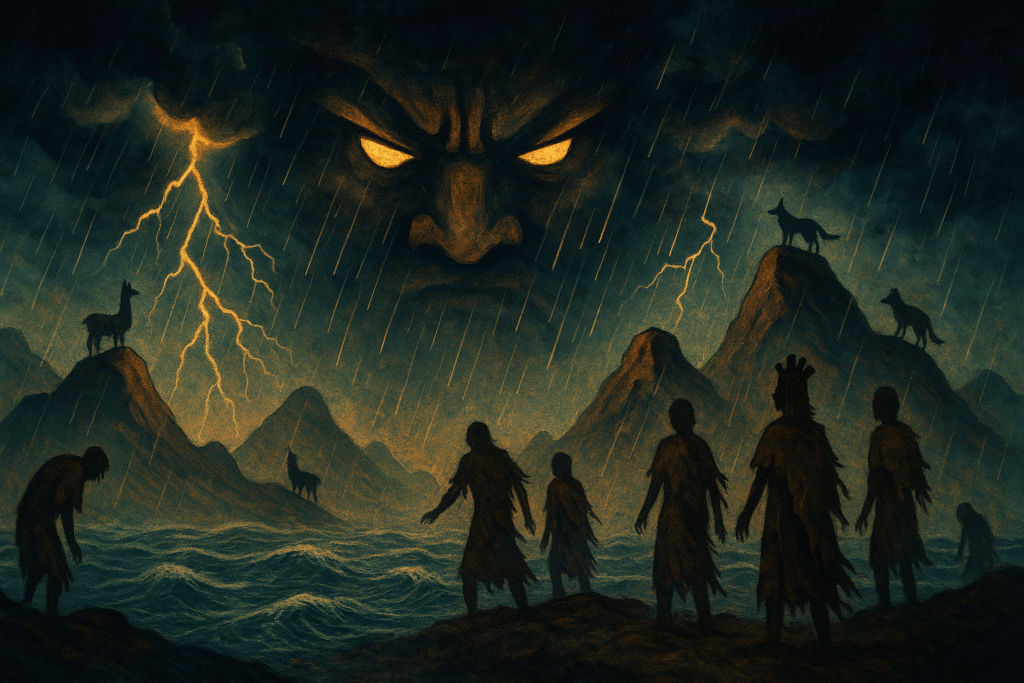
⌛ Veneration before the Incas
Long before the Inca Empire, cultures such as Tiwanaku and Pukará already worshipped a creator deity linked to water and the sky.
When the Incas consolidated their power (15th–16th centuries), they adopted their cult as their ideological foundation, spreading it from Lake Titicaca to the Cusco Valley and the borders of Chile and Ecuador.
🏛️ Wiracocha Temple in Raqchi
It is located two hours southeast of Cusco and is the only temple in the Inca world dedicated to him. Its 15-meter-high walls reflect the reverence for this supreme deity.
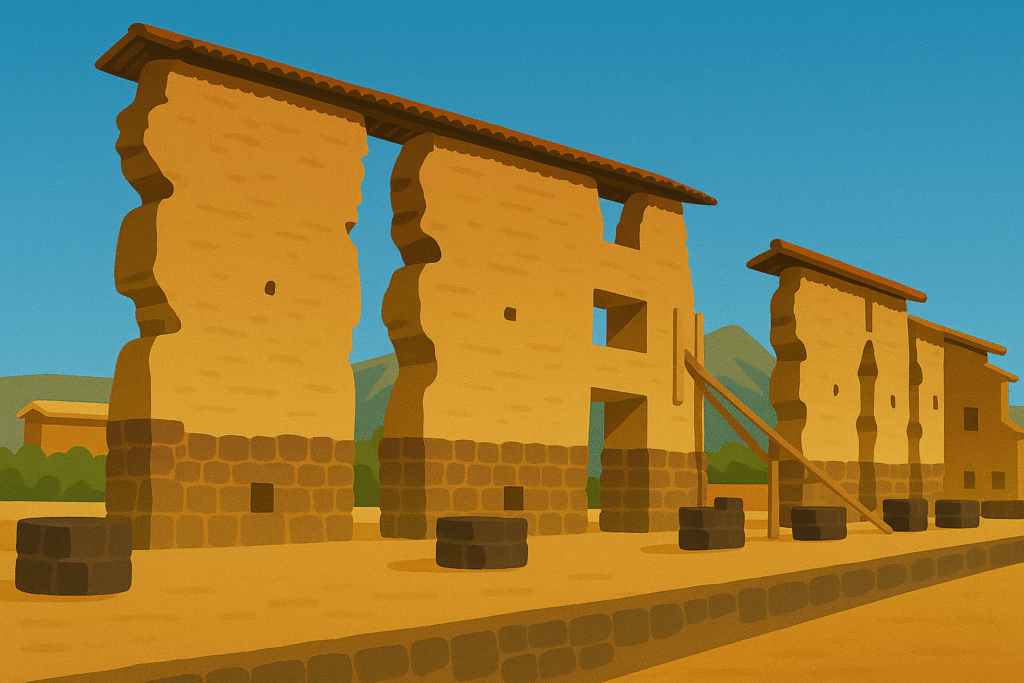
♾️ Symbolic Representations
In the Kalaasaya temple of the Tiwanaku or Tiahuanacoculture, it appears on a large wall with crossed scepters, symbolizing its duality: order and chaos, creation and destruction.
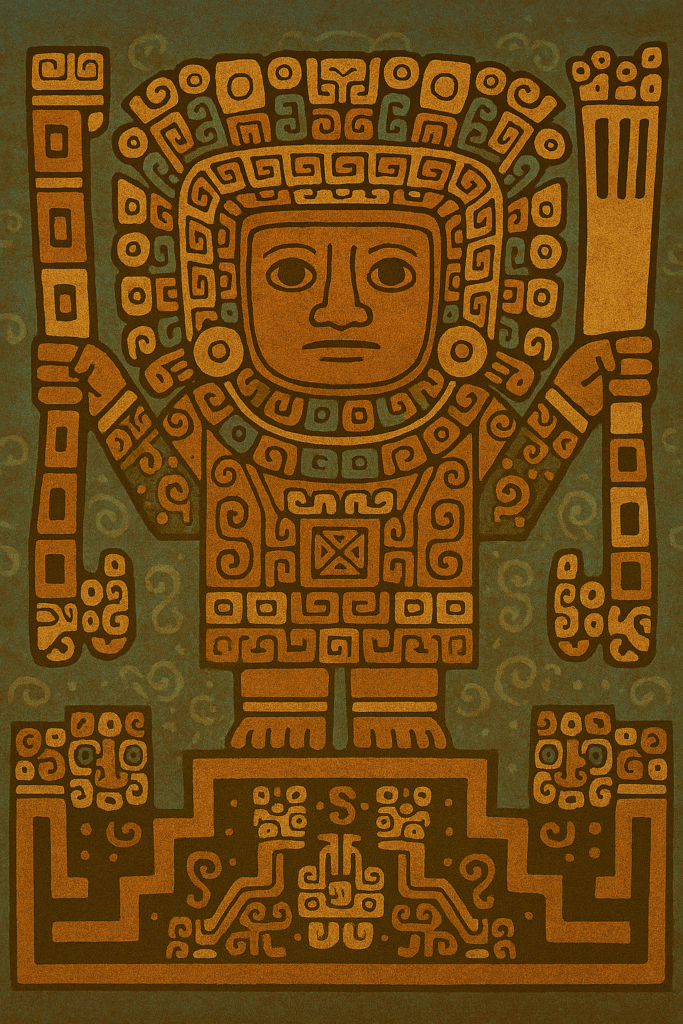
✨ Conclusion
Wiracocha, the great creator of the Andean universe, was a god who gave life to humans and deities alike and brought order to the cosmos. Although the Incas favored the worship of the sun god, they recognized Wiracocha as the original source of all power and creation.
He became a bridge between Andean mythology and the Christian vision, establishing himself as one of the most significant deities of the Andes.
